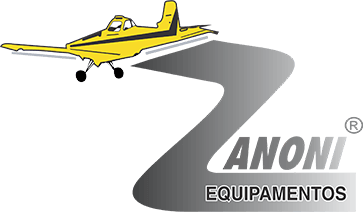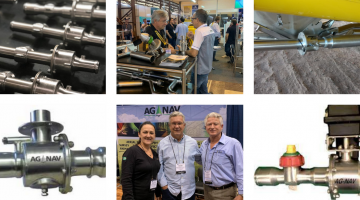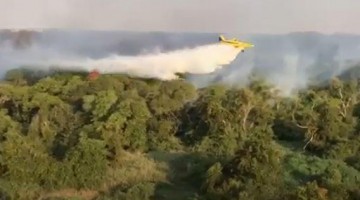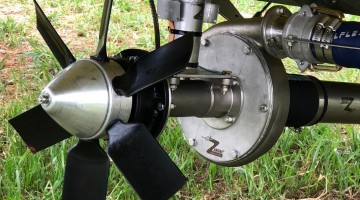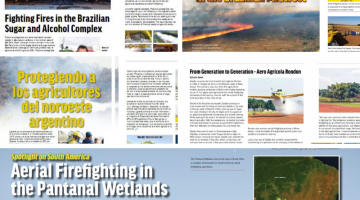THE PROJECT
Last week, the first aerial firefighting research station in Latin America was inaugurated. Established in São José do Rio Preto (state of São Paulo, Brazil), at the operational headquarters of Imagem Aviação Agrícola, the project was structured together with three other aerial application companies (Pachu, Produtiva and Vale do Paranapanema), in addition to the manufacturer Zanoni Equipamentos and the consulting firms SABRi - Sabedoria Agrícola and RTC - Gestão of Risks and Training.
The open-air laboratory was implemented to evaluate the performance of agricultural aircraft in firefighting, measuring the wetting area and the deposition of dumpings with different technologies. The data collected are of great importance for the activity, because from them, it will be possible to analyze the effectiveness of each ag aircraft for different types of fire and determine best practices for the industry.
In the first research protocol carried out to date in Brazil, six aircraft were evaluated: Ipanema 202, Air Tractors 402, 502, 602 and 802 and Thrush 510, all equipped with Zanoni firegates. In addition to helping contractors (such as sugarmills, farmers and governments) to better understand aerial firefighting technologies, the information collected will be an "international case" for discussion on the use of agricultural aircraft in this activity, since it is a pioneering project around the world. The research mobilized more than 50 professionals and was supported by SINDAG (Brazilian National Agricultural Aviation Association) and the agronomy faculty of the Centro Universitário de Rio Preto (UNIRP) university.
THE FIRST RESULTS
After a week of work evaluating the most popular agricultural aircraft in the Brazilian market, the research found the two main indicators of aerial firefighting technologies (wetting area and deposition) for each of them eqquiped with Zanoni gates:
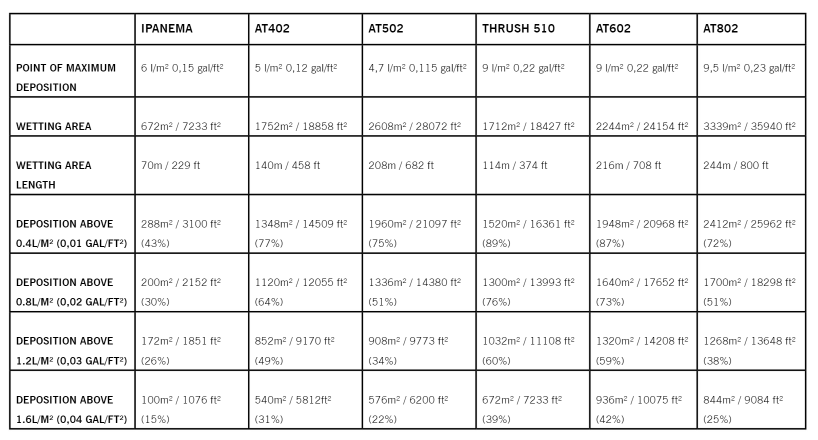
THE FIRST CONCLUSIONS
After the first stage of the project, some interesting conclusions were found to contribute to Brazilian agricultural aviation and the use of SEATs around the world, highlighting: (1) the total incompatility of the standard agricultural aircraft system for this work; (2) the possibility of using smaller aircraft for low density vegetation fires (3) the potential of great results with transversal/hybrid fire gates.
In several countries around the world, it is still common to see the attempt to carry out aerial firefighting with common gate boxes. The fact of discharging water from the aircraft leads to the belief that this will contribute to control of fire. But if it does not reach the required volume of deposition, its use can mean not only a waste of time and resources (since it will not generate significant results in controlling the fires), but also create the opposite effects. If the amount of water or retardant dumped by the aircraft is not enough, the mass of the liquid can only “push” more oxygen towards the fire source and increase its strength even more. One of the results found by the research was that common gate boxes of the main agricultural aircraft models do not offer efficiency for this activity. The volume of water found in the collectors after each operation was negligible, and it was impossible to even measure it. Thus, it is important that the aerial application industry is aware of the need for appropriate equipment to perform this type of services, at the risk of denigrating the image of aerial firefighting and decrease the demand for this type of technology.
A second interesting finding from the research was related to the use of small agricultural aircraft. For a few years, the use of piston aircraft (such as Embraer Ipanema and Cessna 188) for firefighting in Brazil has been common among farmers. Although there was always a theoretical discussion that small-capacity aircraft would not be efficient for this service, during all drought seasons they had been performing this task. The data collected by the project indicated that, with the proper equipment, a 200-gallon aircraft can indeed be viable in controlling fires in pastures and crops. From these new technologies, it is now possible to use a fleet of more than 1500 Brazilian small ag aircraft to protect farms around the country.
Finally, the research indicated that transversal opening gates (single door) can offer excellent results and are suitable for fighting fires in high density vegetation, such as savannas, tropical forests and pine plantations. Countries with weaker public sectors and with smaller state budget have stood out for developing an aerial firefighting model that is different from countries in the northern hemisphere (where contracts are usually governamental). In their reality, this activity has been driven by the private sector, where several farmers and agribusiness companies have contracted the aerial application services to protect crops and private forests against fires. The bigger single-door gates fit perfectly for this demand: in addition to offering an excellent dumping for firefighting in high density vegetation (with scientific proof for this work), they are compatible with the agricultural system and works for liquid application and solid spreading. The routine of ag pilots in these regions, many having up to three crop seasons, often involves spraying agrochemicals in the morning and fighting fires at the end of the day.
